What Is Adaptive Clothing, and Why Are More Retailers Offering It for Children?


July is Disability Pride Month. It’s also the start of back-to-school shopping for many families. In other words, it’s the perfect time for JCPenney to introduce Thereabouts, an apparel line featuring adaptive clothing options for disabled and neurodiverse children.
JCPenney is the latest American retailer to offer its own brand of adaptive children’s clothing, joining the likes of Target, Kohl’s, Tommy Hilfiger, Zappos and Lands’ End.
Adaptive Clothing and Fashion 101
So, what exactly is adaptive clothing? As Annie Groer wrote in a 2019 Washington Post article, it is “clothing and shoes re-engineered for children and adults with physical, cognitive or sensory issues, both chronic and short-term.”
Adaptive fashion lines, added Groer, “offer style, dignity, independence, even joy to younger, hipper consumers with disabilities, whether they dress themselves or get help from others.”
Some common features found in adaptive clothing (such as those in JCPenney’s Thereabouts line) include:
Larger openings and simpler fasteners (such as magnets or Velcro) for those with limited dexterity and fine motor skills to dress themselves more easily.
Abdominal access, which allows for feeding tubes (usually in a concealed layer of a top, like a hoodie pocket or a built-in camisole in a shirt).
Wide-leg pants with adjustable sides to allow room for leg braces to be worn.
Extended size ranges are also available on items like bodysuits, onesies or diaper-friendly clothing.
Differently proportioned pants, a design crucial for making sitting in a wheelchair more comfortable.
Flat seams (or no seams) and tag-free labels also limit sensory overload for those with sensitivities.

Why do these designs matter for adaptive clothing?
As the mother of a disabled child, I greatly appreciate the increased availability of adaptive fashion options.
Previously, adaptive children’s clothing was only available if you could sew or hire a tailor. There were some small vendors available online (like on Etsy), but there was no economy of scale, so prices were extremely high for many families. Major retailers like Target, Kohl’s and now JCPenney, however, are able to bring adaptive clothing prices down to the same price point as their other offerings by using materials already in production. After all, as any parent knows, kids outgrow and wear out clothes very quickly!
In addition, adaptive clothing in earlier years was primarily focused on older wearers, focused almost entirely on function instead of fashion. There were solid colors (usually navy blue or beige), and one-size-fits-all templates, geared toward adults.
Today, my son’s clothes look just like his peers’, with bright colors and patterns and fun characters and all. The only difference is his pant legs have Velcro to accommodate his leg braces, and his shirts have special holes for his feeding tube to thread through.
My family has loved seeing what new adaptive items will be released each season. Last year, for example, ShopDisney sold adaptive Halloween costumes in a variety of characters ranging from princesses to Buzz Lightyear. And just last month, Target released $20 backpacks designed to be strapped onto the back of wheelchairs, with special storage for a feeding pump and a port for a feeding tube. This is huge news, as similar backpacks can cost five times that price on sites like Etsy or through medical supply companies.
Looking ahead at an expanding adaptive clothing market
The U.S. adaptive clothing market is expected to reach nearly $53 billion in 2022. (This projection includes children’s and adults’ clothing.) While the industry has made incredible strides over the past few years, there is still much progress yet to make.
For example, Facebook and Instagram’s algorithm rejects any paid ads that mention disability, or ads that feature medical equipment like wheelchairs. This creates a barrier to entry for small adaptive fashion companies.
In addition, some big companies may enter the adaptive fashion market without adequate input from the disability community itself, especially in the planning stages.
“You can definitely see which companies are really trying to understand their customer, as opposed to who is just trying to check the inclusivity box,” said Helya Mohammadian, founder of adaptive underwear brand Slick Chicks, in a recent interview with Forbes.
JCPenney’s Thereabouts line had a rigorous research and development phase with parents, children, disabled consumers and adaptive fashion consultants.
“When designing the Thereabouts collection, it was essential to us that we developed the line in partnership with the disabled community,” said Michelle Wlazlo, JCPenney executive vice president and chief merchandising officer, in a recent interview. “Their sensory, dexterity and mobility needs were top of mind during the design process.”
Image credits: JCPenney newsroom
Breaking the Stubborn Ocean Plastic Cycle
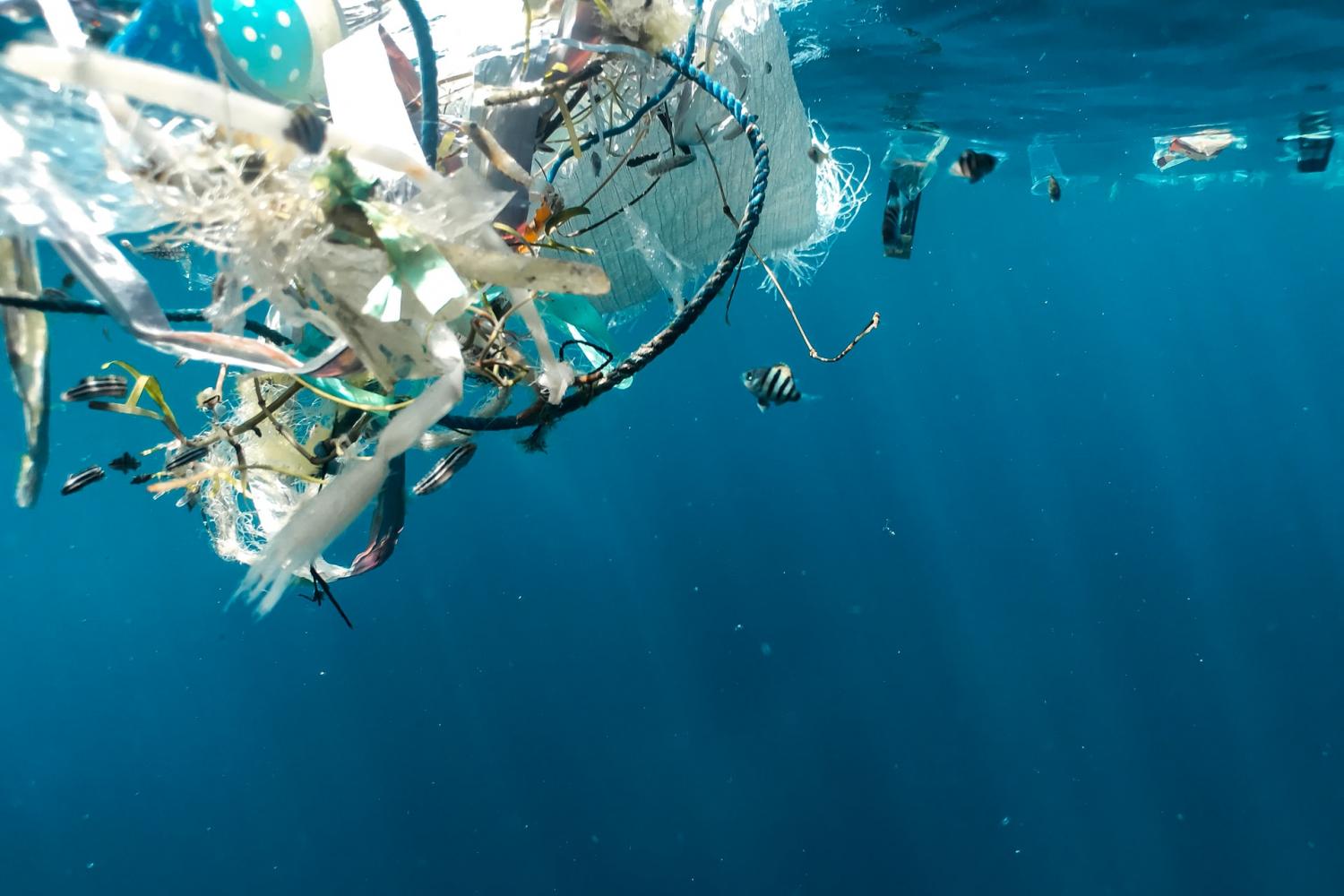
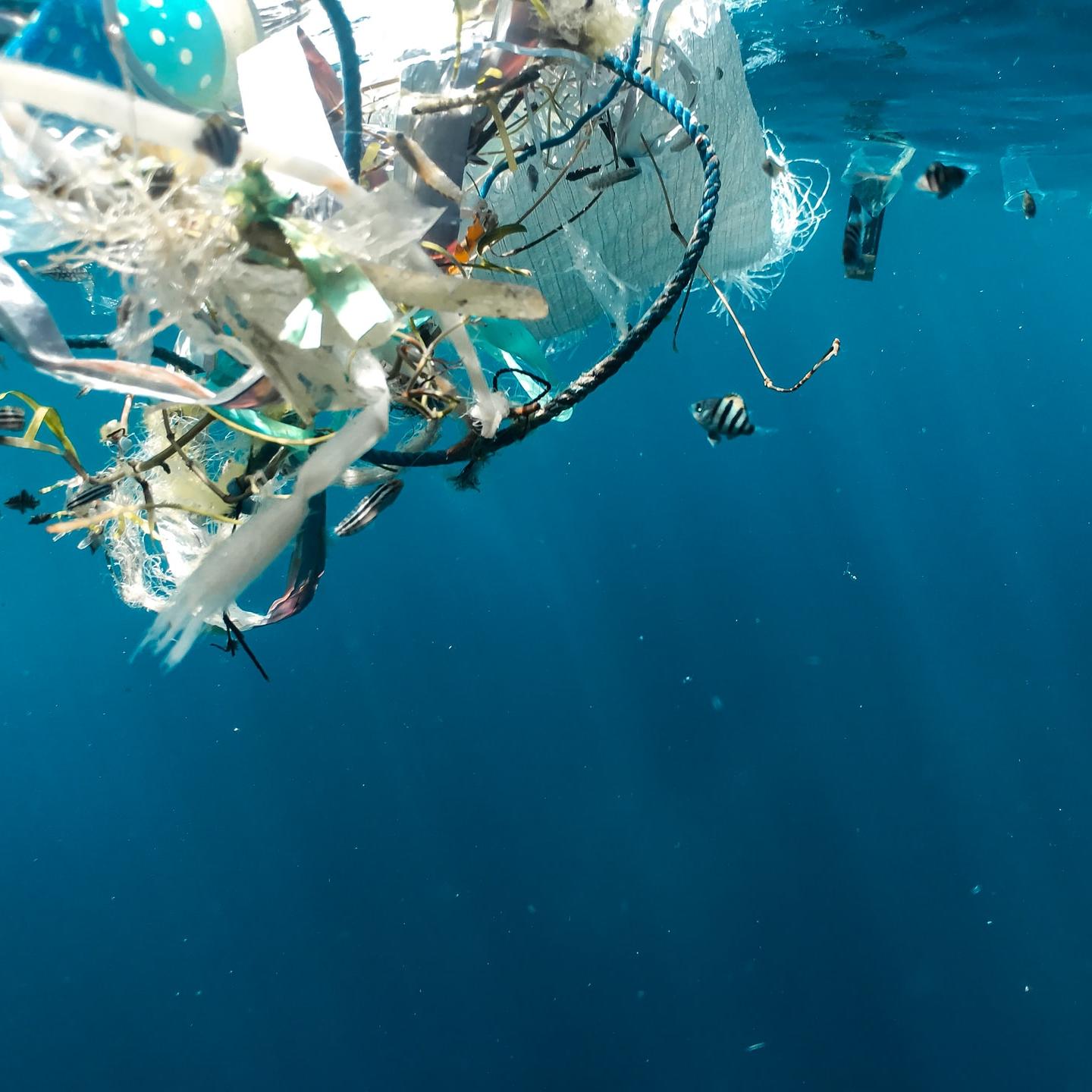
The ocean plastic crisis shows no sign of going away, and it never will unless somebody, somewhere, can figure out a way to make harvesting plastic trash more financially attractive than digging virgin oil and gas up from underground. A new recycling process is emerging that promises to do just that, but care must be taken in order to prevent recycled plastic from entering the ocean all over again.
The clock is ticking on ocean plastic action
Last year, the organization Pew Charitable Trust produced a report on the ocean plastic crisis called Breaking the Plastic Wave. It laid out a gloomy view of the state of affairs. On a brighter note, the report also described a strategic timetable for achieving significant progress in the near future, based only on technologies and systems.
“The next two years will be pivotal for breaking the trend and implementing a first horizon of change that will allow key milestones to be met by 2025, including stopping the production of avoidable plastic, incentivizing consumers around reuse, improving labelling, and testing innovations such as new delivery models,” Pew wrote.
Looking farther out to a 2030-2040 time frame, Pew anticipated that “achieving the outcomes modeled under the System Change Scenario would require substantial changes in the business models of firms producing and using plastics and their substitutes,” in addition to similar changes in recycling and waste management, investment criteria, and consumer behavior.
Follow the money
All of these elements could fall into place if money were involved.
The energy transition provides a model of how that would work. Several leading oil and gas producers have begun to make significant investments in renewable energy even though it cuts into their oil and gas business, with Shell and BP being among the leading examples.
In addition, individual and institutional investors are beginning to flee the fossil energy field in favor of renewables, partly motivated by a surge in activity among activist shareholders and rising consumer demand for clean power. The demand-side pressure is coming from filtering up from individual rate payers to top corporate energy buyers as well as state and local energy policy makers.
The energy transition still needs to speed up substantially in order to avert global catastrophe — and it will, now that renewable energy is becoming competitive with fossil energy on cost.
An economical solution for ocean plastic pollution
A similar dynamic could be at work on the ocean plastic crisis. A new generation of more efficient recycling systems is beginning to emerge, partly with the help of research and development funding from L’Oreal and other leading corporate consumers of plastic.
That helps to improve the financial picture, but recycled plastic must still find a market, meaning that it must compete against virgin plastic on both cost and performance, too.
Vigorous subsidies and public policy can help tilt the playing field. Consumers who are willing to pay more for sustainable products can also help carve out space in the market. However, as Pew points out, the clock is ticking. Scale-up and acceleration are the key, and that will only happen when more investors realize there is more money to be made in plastic recovery and recycling.
A research team organized by the BOTTLE consortium is pursuing one solution to the money problem.
BOTTLE stands for Bio-Optimized Technologies to keep Thermoplastics out of Landfills. The consortium includes 10 national laboratories and academic research institutions operating under the umbrella of the U.S. Department of Energy. The focus is on “upcycling strategies for today's plastics and redesigning tomorrow's plastics to be recyclable-by-design.”
The new research was produced by a team from the National Renewable Energy Laboratory (NREL) and the U.K.’s University of Portsmouth. Although focused on textiles and carpeting rather than plastic bottles and straws, the research project does indicate that the plastic crisis is not a hopeless one.
The research team used enzymes to convert PET plastic into two components, terephthalic acid (TPA) and ethylene glycol. They modeled their system against the production of virgin plastic and found several key advantages.
A holistic solution to a global problem
One leading advantage is a sharp reduction in energy consumption and greenhouse gas emissions.
“Compared to conventional fossil-based production routes, the research team determined the enzymatic recycling process can reduce total supply-chain energy use by 69 percent - 83 percent and greenhouse gas emissions by 17 percent – 43 percent per kilogram of TPA,” NREL explained.
The researchers also took environmental and socioeconomic effects into account. Noting that the economic benefits and social costs of virgin plastic are unequally distributed, they calculated that the new process would reduce environmental impacts by up to 95 percent, while creating new jobs that generate up to 45 percent more socioeconomic benefits.
Most importantly, the study indicates that the enzymatic process is cost-competitive with the production of virgin PET.
“That’s one of the biggest opportunities,” explained NREL chemical engineer and lead researcher on the project Avantika Singh. “If we can capture that space - textiles, carpet fibers, and other PET waste plastics that are not currently recycled - that could be a true game-changer.”
Keeping plastic out of the ocean, permanently
At first glance, textiles may not seem to be a significant part of the ocean plastic problem. However, the NOAA Marine Debris Program does list cloth among the leading types of debris in the ocean.
Illegal dumping and individual carelessness are parts of the textile debris problem. NOAA’s research indicates that accidents also play a large part.
“Materials can be dumped, swept, or blown off vessels and stationary platforms at sea,” NOAA explains, adding that cargo ship accidents can be a leading source for all sorts of debris, from sneakers to TV sets and toys.
Textiles and other debris from land can also makes their way to sea, especially after floods, storms, and other catastrophic natural events.
In other words, the new BOTTLE research is a promising solution, but only if the end result is a suite of recycled plastic products that have little or no chance of becoming ocean plastic waste all over again.
The problem also includes microscopic plastic particles. Discarded bottles and other beach debris make for eye-catching photos, but a significant part of the ocean plastic problem is invisible to the naked eye.
If and when the recycled plastic market overwhelms fossil-based plastics, manufacturers and consumers must address the issue of ocean re-entry for both larger items and microplastic particles.
For example, one potential market is the use of recycled plastic to repave roads. That opens up a whole new area of potential ocean impacts related to tire wear and tear.
Another area is everyday laundry, which has been identified as a significant source of plastic microparticles in the ocean. Recycling other plastic items into clothing may solve one problem, only to contribute to another.
As new, more efficient plastic recycling technology emerges, policy makers and industry stakeholders will need to collaborate closely on solutions that truly undo the damage, and do it permanently.
Image credit: Naja Bertolt Jensen/Unsplash
The Real Estate Sector Learns Sustainability Is Key for Both ROI and Resilience
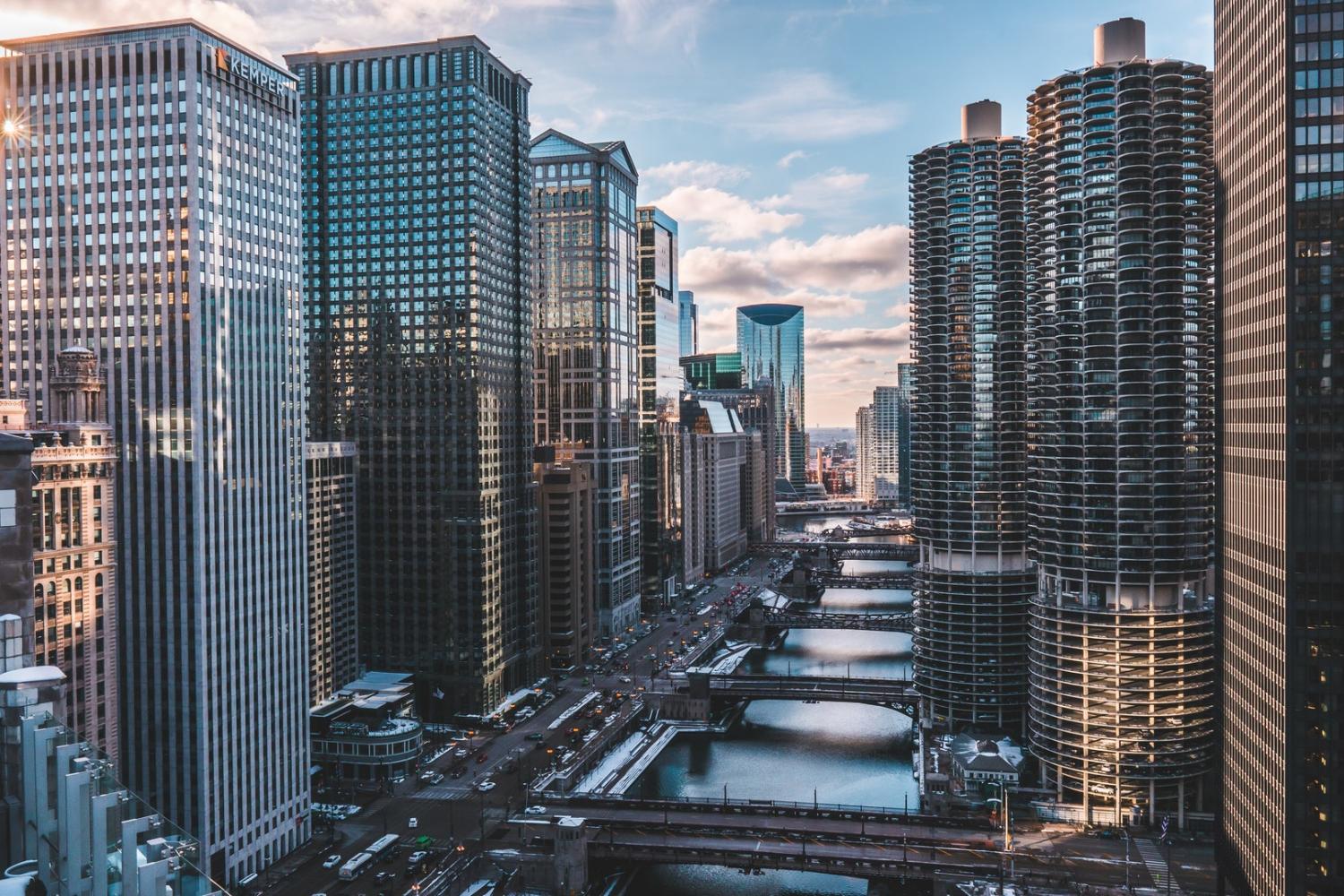
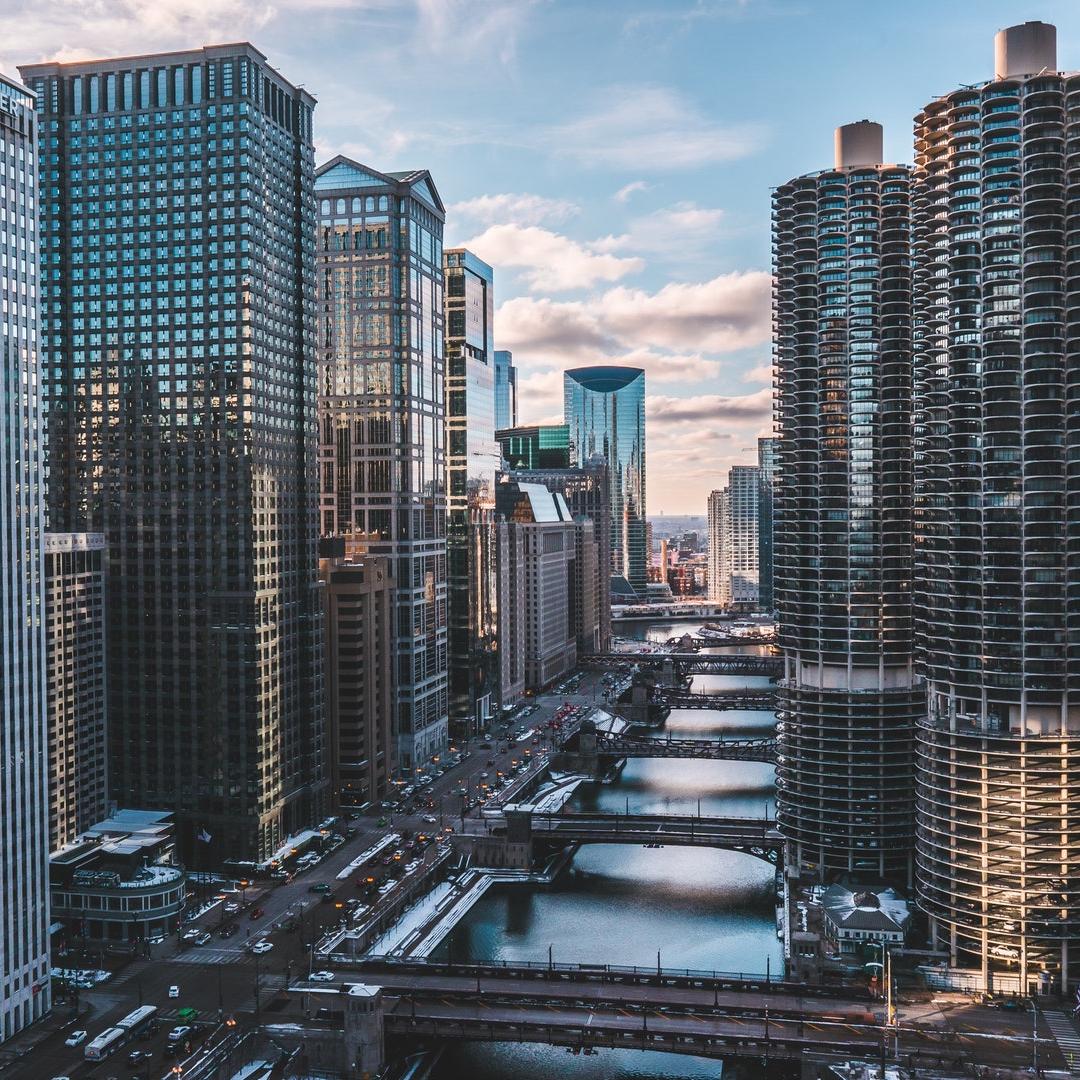
The path to net-zero is taking another step forward, as one of the world’s highest carbon-emitting sectors says it is amplifying its focus on sustainability and decarbonization. We know the scientific rationale driving the worldwide push for decarbonization: The process minimizes the total greenhouse gas output largely by relying on low-carbon energy sources. This is critical for mitigating climate change and, according to a new survey, it offers a compelling business opportunity for real estate owners, occupants and investors.
The real estate industry, specifically building and construction, is responsible for 38 percent of global carbon emissions, according to the U.N. Environment Program. Key players within the sector are starting to reply in kind: The worldwide commercial real estate services company JLL recently released a survey that revealed real estate senior executives are now more focused than ever before on sustainability. By and large, they have accepted the reality that climate risk is a financial risk. Further, the COVID-19 pandemic added a sense of urgency to taking on climate change risks while ensuring the safety of the buildings the real estate industry builds, sells and leases. Meanwhile, people are demanding safer and more sustainable spaces in which they live and work.
“People are beginning to see buildings as becoming agents of change and a force of good again rather than a cost ramification but that's exactly what's going to have to happen for all of these commitments that are coming out to be met,” said Robbie Hobbs, JLL’s global product group leader of sustainability and workplace management, during a recent interview with TriplePundit.
The economic benefits of decarbonization
As the interest and demand for sustainable real estate increases, its industry leaders are left with a few options to increase the attractiveness of their assets and remain competitive. For existing infrastructure, upgrades can be made. For this alternative, Hobbs explained that new technology and the promise of a competitive return on investment (ROI) supports the extra expenses necessary to make the real estate industry secure long-term resilience.
According to JLL’s research, investors believe decarbonization creates value and a competitive edge for them. Hobbs addressed three options within the decarbonization process that investors can lean on: onsite renewable energy, the procurement of off-site renewable energy, and carbon offsets. Through these steps, investors can differentiate their asset value beyond the standard factors like location and square footage.
Such options, along with prioritizing progress on the road to a net-zero economy, can help companies ensure they can continue to thrive in a competitive real estate market. The business opportunities resulting from real estate companies’ increased focus on sustainability and decarbonization for their buildings’ tenants, Hobbs said.
One such opportunity for these companies’ clients is the ability to attract and retain talent, as the next generation of employees will often make their career decisions based on wishing to work for companies that align with their values. The real estate industry’s commitment to building and retrofitting buildings for long-term resilience is crucial, as climate change is often stated as one of the five largest concerns of millennials and Generation Z.
Enabling sustainability in real estate
An increased focus on sustainability, defined by making bold, long-term climate action commitments, is not enough. Businesses need to be able to show their progress if they are to reap any future economic opportunities while scoring a boost in brand reputation. Real estate developers and investors indicate they are well aware of this. For example, the survey indicates they understand that any current ambitious climate mitigation plans need to be translated into targets. In fact, 81 percent of the stakeholders who JLL queried believed that strong partnerships between cities and their industry can help drive net-zero action plans.
“We need owners, investors, city governments all working together to drive regulation, to drive investment, and to drive the development of supply to the level that it needs to get to,” Hobbs said. Collectives are impactful and can drive change because they have more lobbying power, he added. On the other hand, governments have a duty, too. Hobbs elaborated on this point by explaining that clear guidance and regulatory frameworks provided by cities can drive the right behaviors in the wider real estate industry.
Right now, leaders within the real estate industry are increasingly focusing on new technology, data collection and measurement. These three focal points can close the digital gap in this industry and enable net-zero plans, according to JLL’s data. For real estate owners and occupants specifically, technology is the top investment focus, as it can provide opportunities for improvement, analytics and decision making. Despite technology’s immense potential, which could help the real estate sector make progress on climate action, nearly half those who JLL surveyed claim their current data systems are in the works, the survey finds.
The current attitudes of senior leadership within this industry are clear. Owners, occupants and investors have no choice but to meet the increasing demand for sustainable real estate in order to maintain their livelihoods. A commitment to a net-zero or even low-carbon economy presents the obvious path, as it can result in the earning of higher returns while averting climate change.
London Is on Board With England's First Hydrogen-Powered Double-Deckers
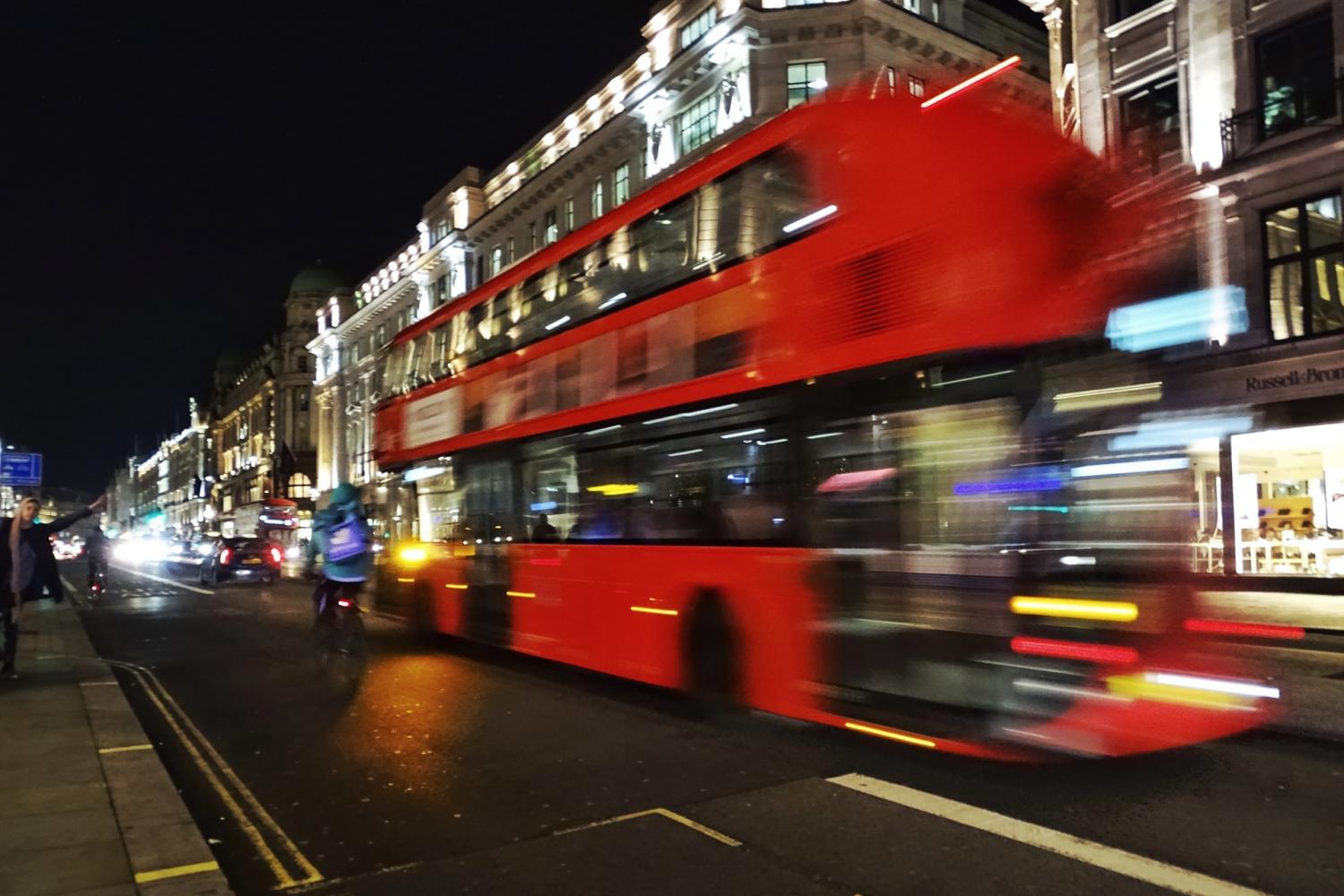
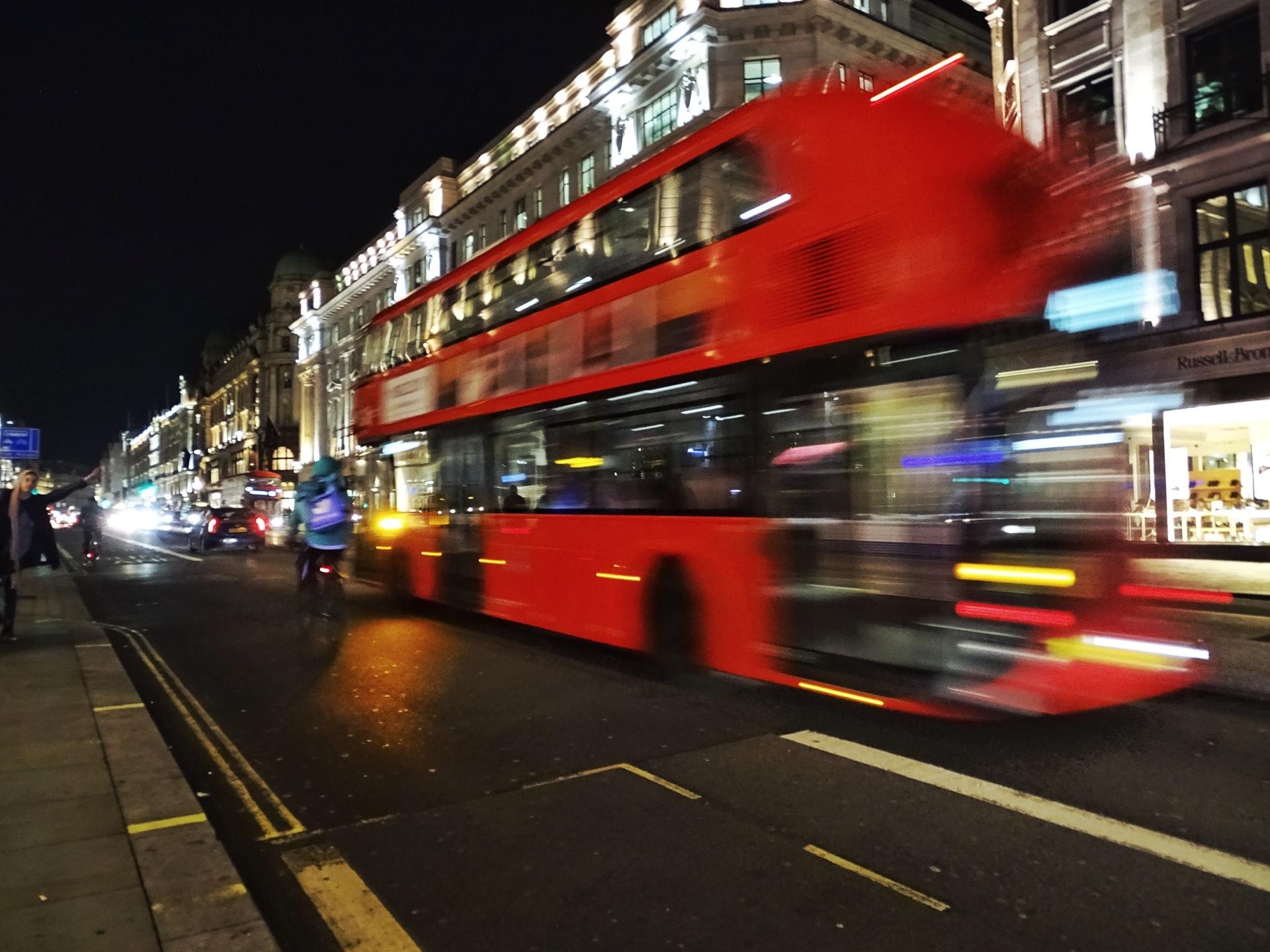
A fleet of 20 hydrogen double-decker buses has been released onto the streets of London to help cut toxic fumes and tackle climate change.
In what is believed to be a first for England, the £12m hydrogen double-decker buses are being introduced on the number 7 route in the capital, running between East Acton and Oxford Circus.
Wrightbus has manufactured the new zero-emission buses and the hydrogen will be produced at a facility in Cheshire. From 2023, the Air Liquide facility in Runcorn will be converted to produce only green hydrogen (using electrolysis powered by renewable energy).
Aberdeen already has hydrogen buses operating and more are expected to be rolled out in Bristol, with each bus needing to refuel once a day.
Transport for London’s (TfL) other business partners for the new hydrogen fleet are gas cylinder manufacturer Luxfer, and Nel Hydrogen, which has installed a refuelling station at an Ealing bus depot.
TfL’s sustainability goal is to operate only zero-emission vehicles by 2030.
Geoff Hobbs, TfL’s interim director of buses, said: “London may have one of the cleanest bus fleets in Europe, but we need to continue to act now to tackle climate change and the city’s toxic air quality.
“Introducing these hydrogen double-decker buses to our fleet, alongside electric buses, diversifies our green bus portfolio and helps us use the right technology for the varying operational requirements of our vast network. This will help Londoners breathe cleaner air.
“Our investment in hydrogen won’t just benefit London, either. Outside the capital, we are supporting jobs across the UK and our involvement with the industry across Europe is making cleaner fuels more affordable to cities all over Europe.”
TfL is also ploughing investment into electric models, with more than 500 electric buses currently in operation, while other buses have been retrofitted to meet the Euro VI emissions standard.
Funding for the new hydrogen buses, which were launched by London mayor Sadiq Khan, has been jointly provided by TfL, the UK Government’s Office of Zero-Emission Vehicles and two European bodies – the Fuel Cells and Hydrogen Joint Undertaking, and the Innovation and Networks Executive Agency (INEA).
It is predicted that hydrogen will account for a quarter of final energy consumption in road transport globally by 2050, according to a recent report by Bloomberg Intelligence.
The UK Government’s National Bus Strategy will result in a ban on new diesel bus sales, with consultations underway to support bus manufacturers and operators and it is aiming to deliver 4,000 British-built electric and hydrogen buses over the course of this Parliament.
Previously published in the 3BL Media newsroom.
Image credit: Belinda Fewings/Unsplash
Five Brands That’ll Quench Your Thirst Responsibly This Summer
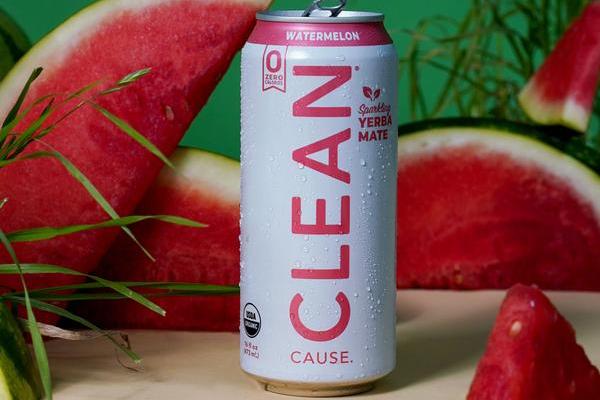
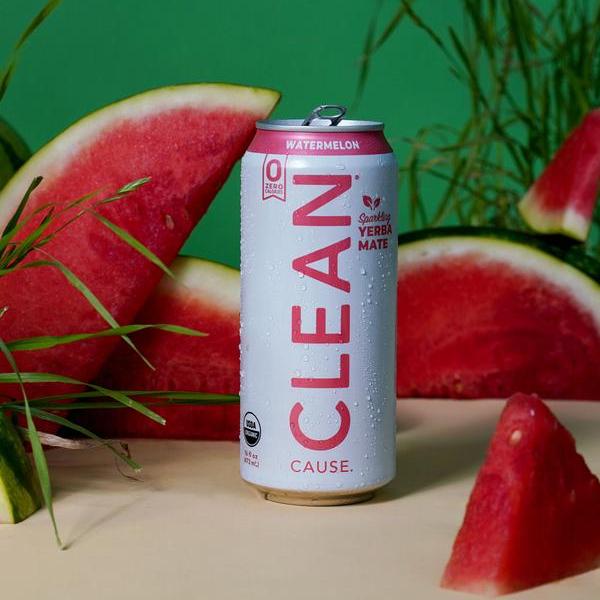
Honestly, most of us do not even want to look at 2020 in the rearview mirror. Sadly, so far summer 2021 has been its own doozy of a season. Climate change is punishing many of us with oppressive heat in the Pacific Northwest, wildfires across more of the western U.S., and dangerous flooding in midwestern states. Add the rise of the Delta variant, and 2022 so far will not look so bad, even with what will surely be polarizing mid-term elections here in the U.S. and mega sporting events slated to launch in nations with far less than stellar human rights records; oh, but then there's that wobbly moon that could be adding more chaos to climate change risks through April 2022.
Nevertheless, this summer has offered many of us the opportunity to reconnect with friends and family, and after a long day of working in the office or remotely, sometimes we just want a cold one. So, whether you imbibe or don’t imbibe, here are a few ideas for quaffing down a cold one by yourself, or with your favorite people – as in beverages that make us feel better that we spent some coin on these companies.
Brew Dr.: Bottled kombucha keeps getting better and better, and for those of us who avoid alcohol yet still want to hang out with our friends at the local bar or taproom (without being limited to a cola served with a slice of awkwardness), more of these establishments are offering these tea- and SCOBY-based drinks. As for consumers who buy into the supposed health benefits of kombucha but don’t want something looking like a human brain lurking in their fridge, the bottled options are a fine choice – and are now even available at drugstores and gas station mini-marts.
Arguing over what is the leading kombucha is about as productive as picking a fight over what is the best ice cream flavor, but we’re giving a shout-out this Friday to Brew Dr. The brand’s ginger lemon, mango, watermelon and yes, the pineapple guava flavors all shine, plus a lavender-chamomile-green tea option Brew Dr. rolled out for Pride has been a winner as well – and the latter helped raise funds for the Trevor Project. The company also participates in the 1% for the Planet initiative; Brew Dr. also donates proceeds from the sales of one of its product lines to organizations focused on racial justice.
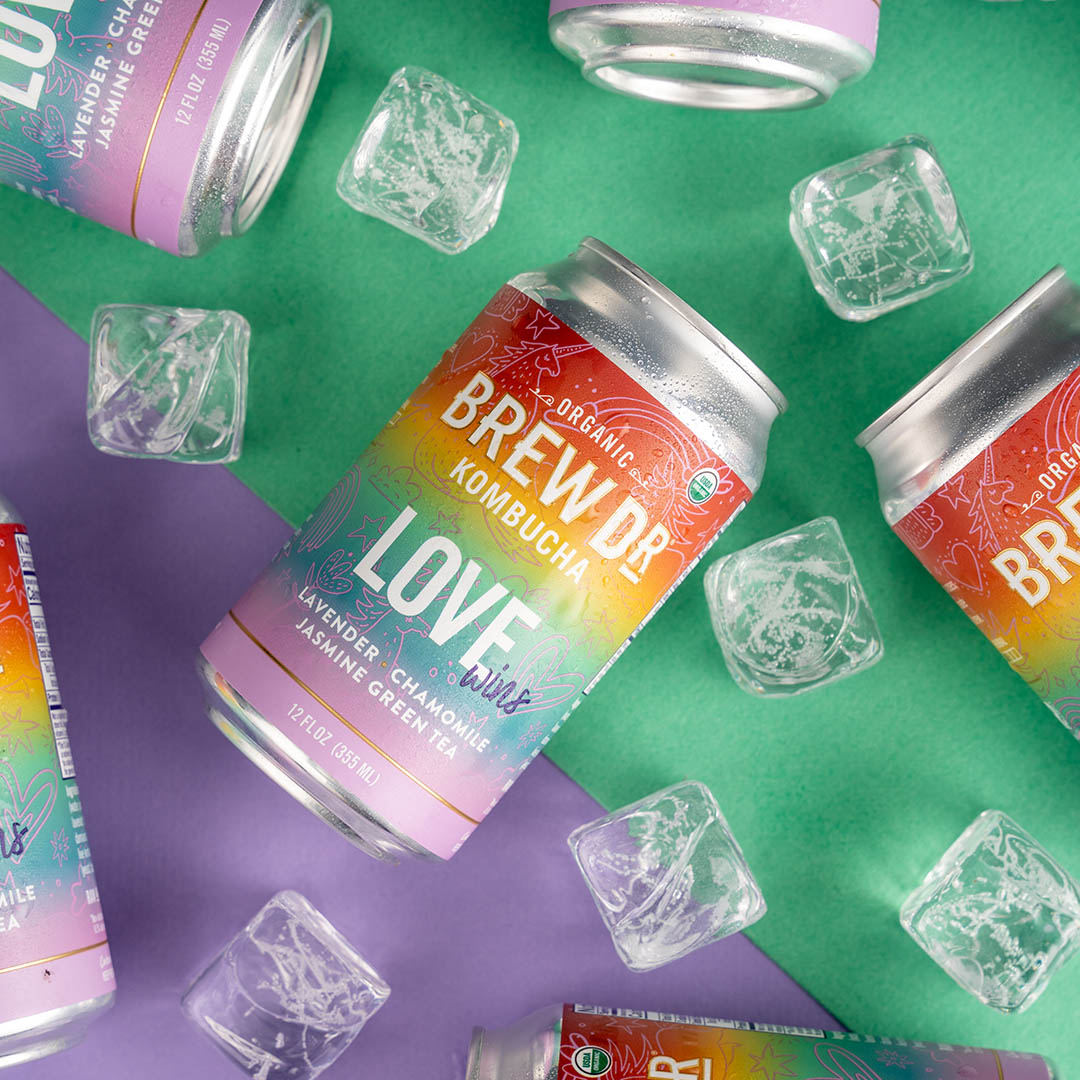
Clean Cause: Intuitively, yerba mate, flavors like berry mint and carbonation should not be in the same list of ingredients, much less mentioned in the same sentence. Clean Cause shows making such an assumption is wrong, wrong and wrong. This Austin-based company has reinvented the fizzy drink, deliciously served in tall, 16-ounce cans. The drinks work cause nothing is overdone: the mate gives off no off-putting earthy aftertaste, the touch of erythritol as a sweetener is just enough and the flavors (others include orange ginger and cherry lime) are understated. Light and crisp sum up these drinks in two words. Plus, there’s a kick of caffeine – just enough to get you through the rest of the afternoon when 2:00 p.m. ambushes you and darn it, there are still several hours of work ahead.
What’s even better about Clean Cause? The company says it donates 50 percent of its profits to fund sober living scholarships. At last check, Clean Cause has fronted the costs of 2,000-plus such recovery scholarships that have added up to a value of more than $1.1 million.
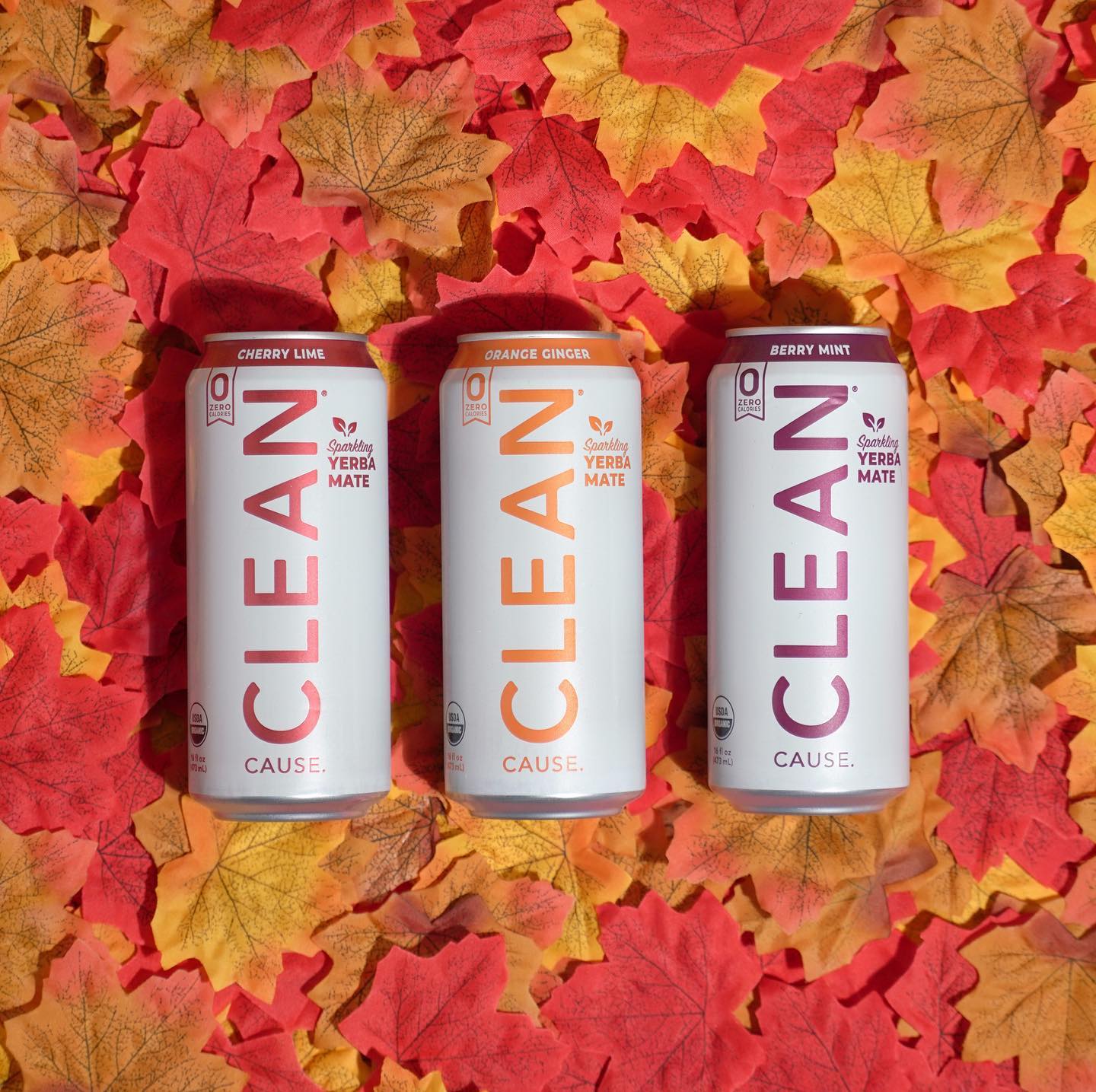
Maine Root: No high-fructose corn syrup here. This company, based in, you guessed correctly, Maine, churns out the next-best thing to a real Mexican cola; traditionalists will enjoy the root beer while the more adventuresome will be intrigued by the blueberry and pumpkin pie sodas. For those who avoid sugar in any form, the diet Mexican cola holds its own (full disclosure: it is sweetened with sucralose). Most of Maine Root’s beverages are fair-trade certified, as the company sources organic sugar cane from Brazil.
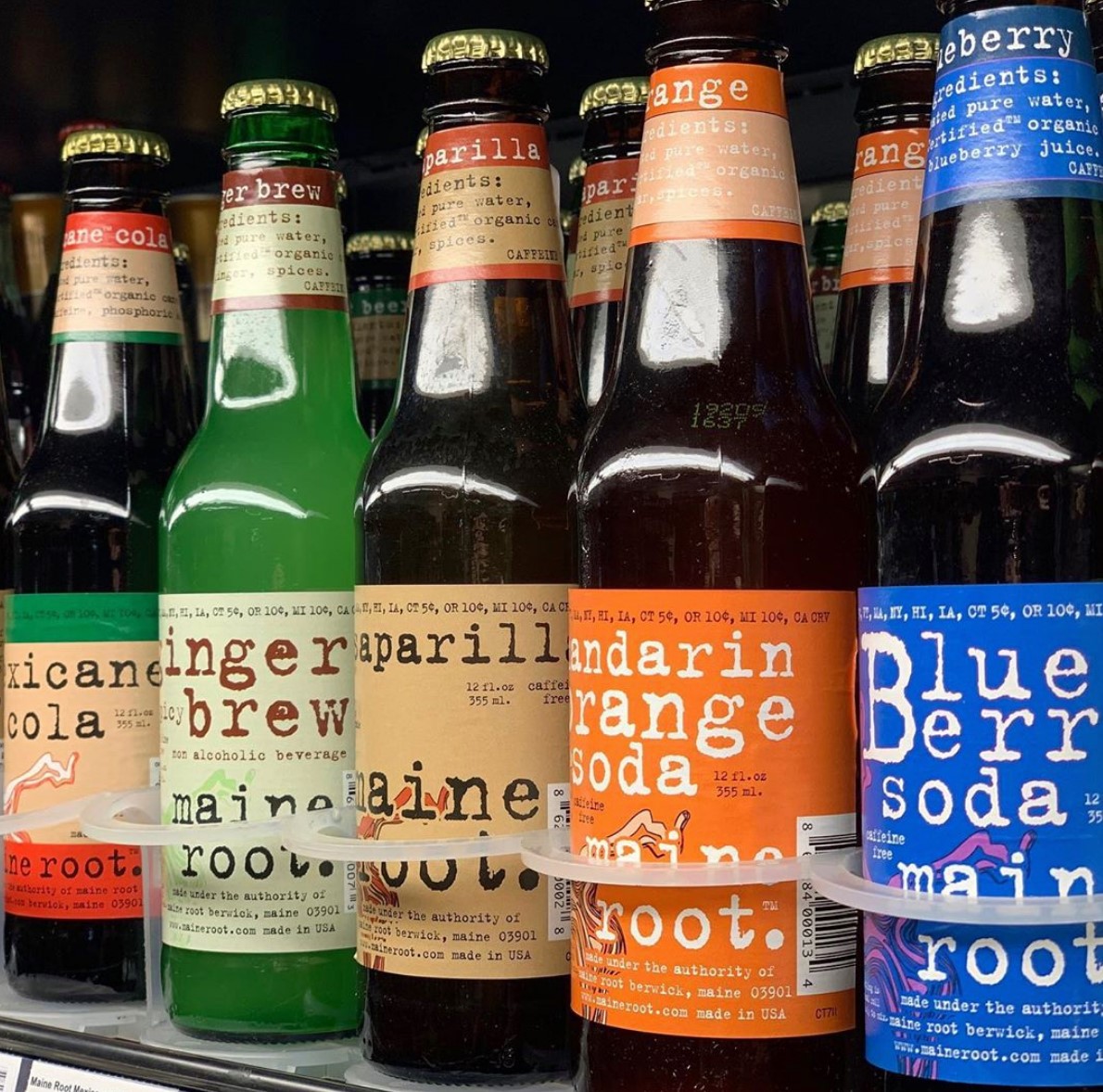
New Belgium Brewing Co.: Here’s one token large company on the list, though its track record over the years suggests its efforts are hardly token. This certified B corporation has performed well both on the environmental front as well as how the company treats its employees. As for its beverages, the company has no shortage of fun, boozy options; plus, one of its ales, Fat Tire, is now officially certified as a completely carbon-neutral beer.
And as TriplePundit’s Sarah Lazanova recently pointed out, the Colorado-based brewer stepped up during the pandemic, as it set up a fund to help out bars and restaurants hit hard by COVID-19’s impact. New Belgium has also operated another fund that for almost a decade has helped out its employees at times of dire financial need.
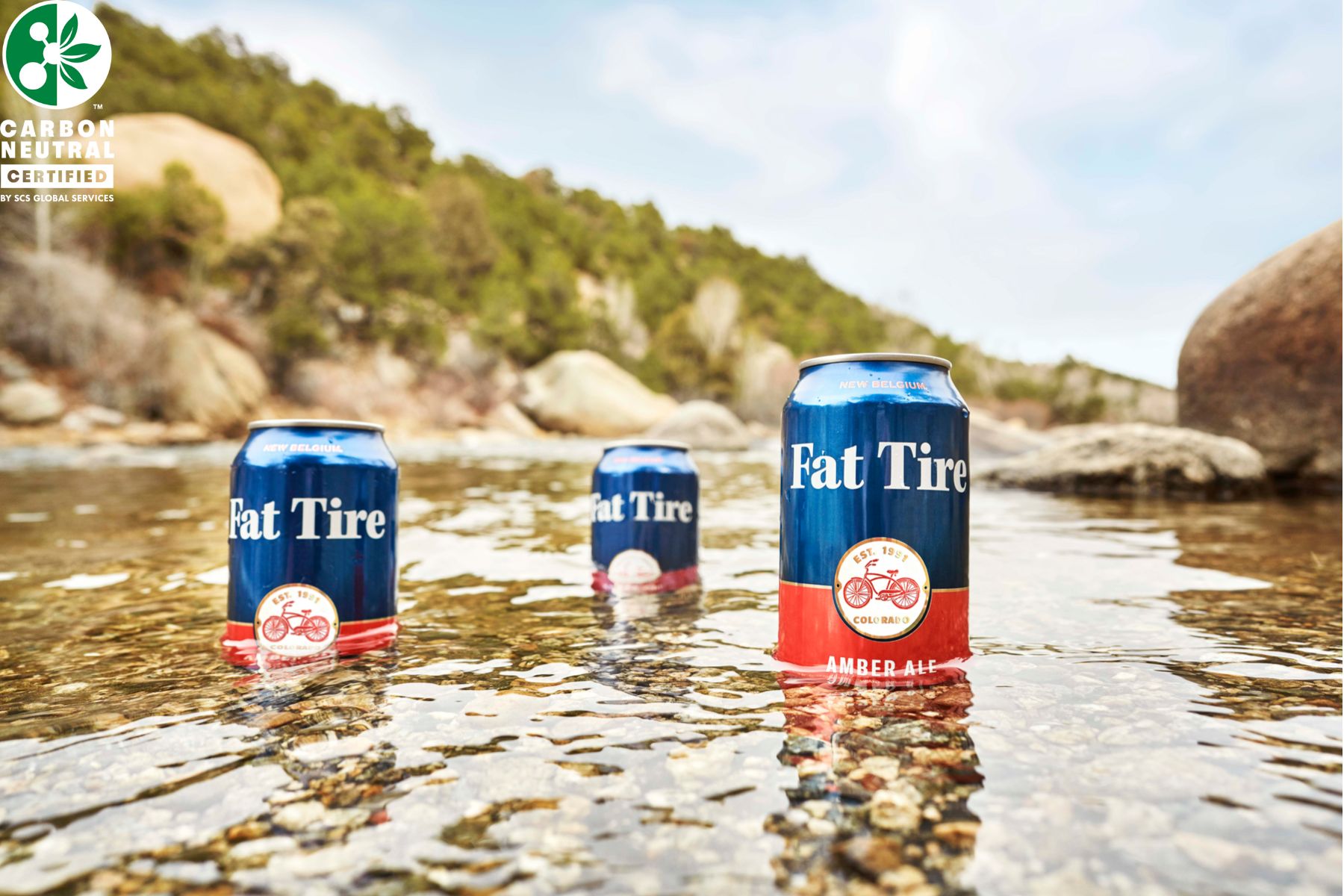
Zaddy’s: Pre-made cocktails are all the rage, and the assortment is overwhelming. Unfortunately, after tasting some, we often feel enraged we’ve wasted our money. But there are plenty of creative choices out there, and the options keep getting better. Among the winners is Northern California-based Zaddy’s. These gin-based canned cocktails check many boxes: The company avoids using plastic within its packaging, participates with 1% For the Planet and donates some proceeds to The Story of Stuff project. Of the three flavors, the favorite is a toss-up between the Gin(ger) Fizz and Corpse Reliever, yet all work. Bottom line, these drinks are a winner – and each only has 100 calories a can.
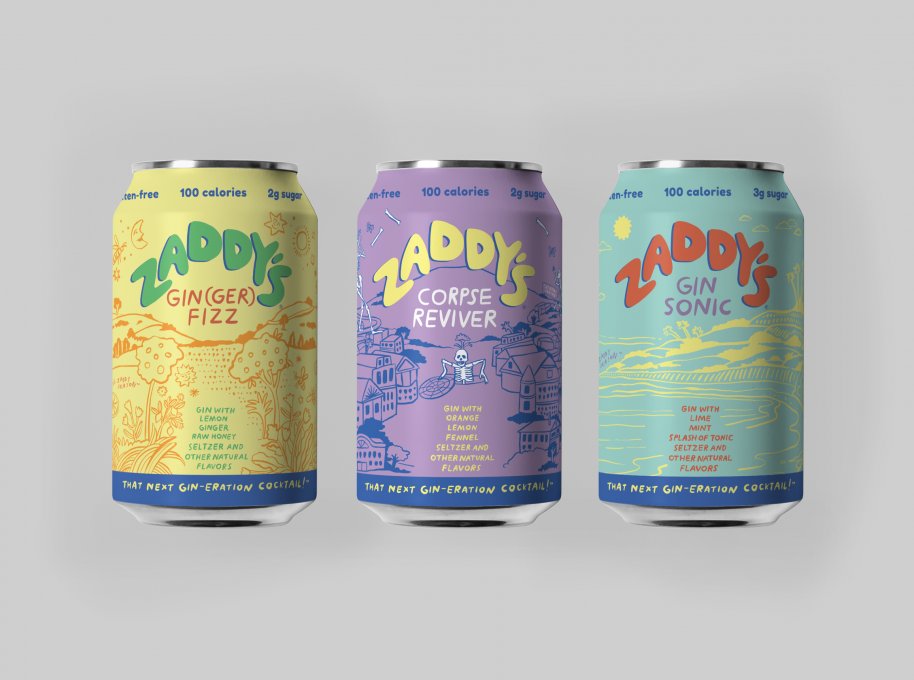
Image credit: Clean Cause
Madewell and ThredUP Spill the Jeans on New Partnership
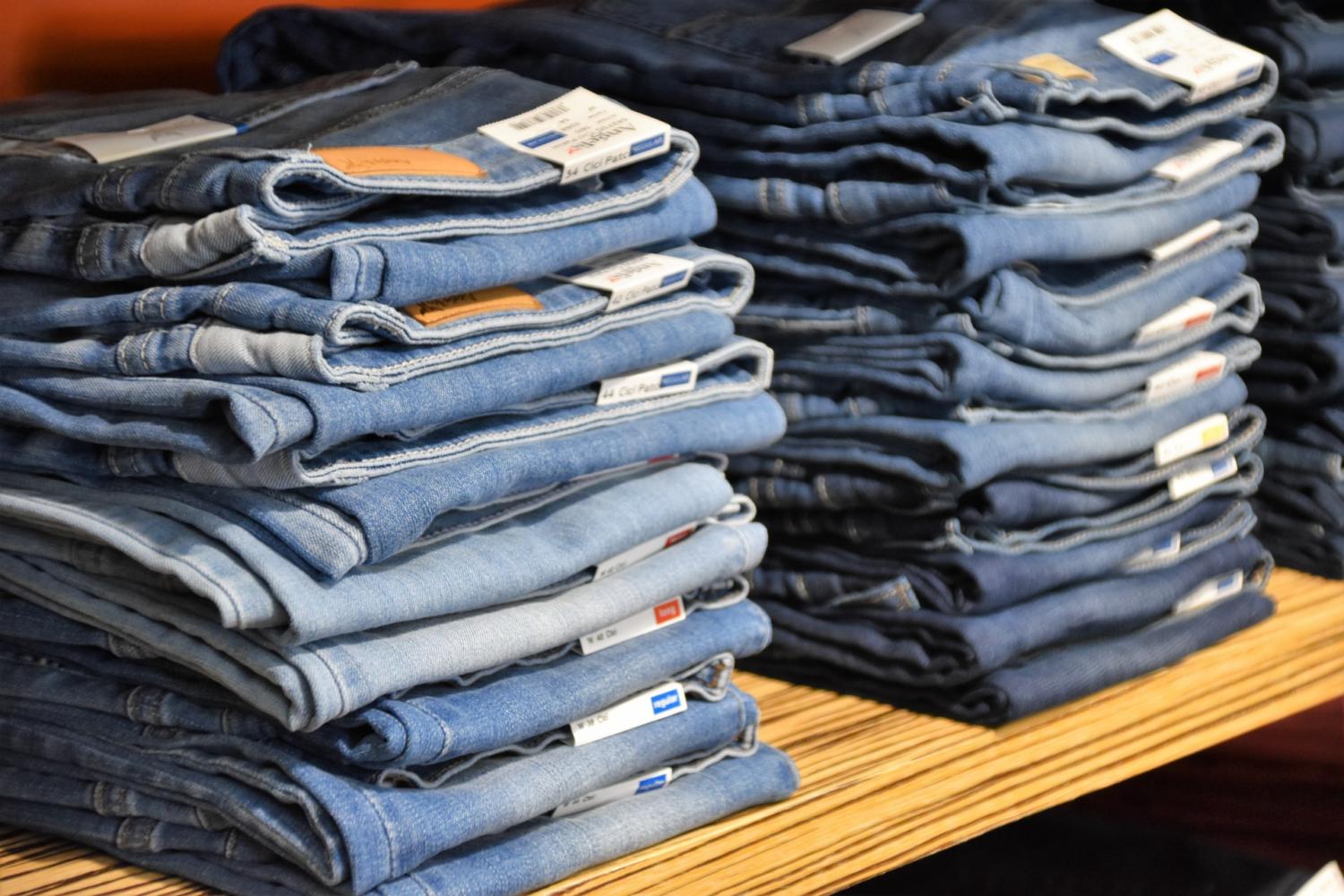
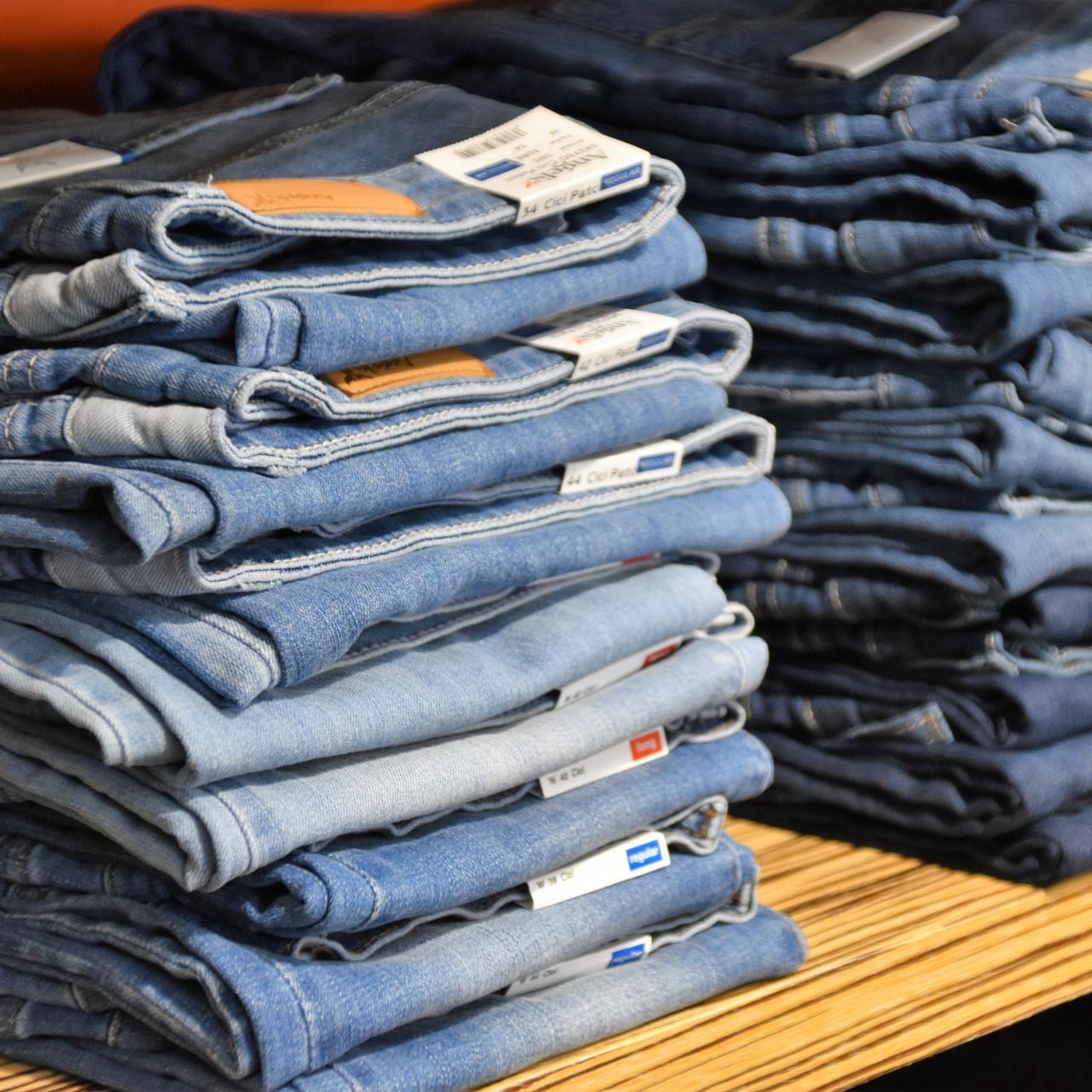
The popular denim jeans brand Madewell has long stood out for its recycling policy: Bring an unwanted pair of jeans into a store and score $20 off your new denim threads. Speaking of threads, the brand is now partnering with the online consignment and thrift shop ThredUP to sell more second-hand Madewell apparel online.
Such partnerships are important as the evidence suggests far too much clothing is still ending up in U.S. landfills. Back in 1960, Americans tossed about 1.7 million tons of apparel into landfills. By 2018, that amount had surged to 11.3 million tons, says data coming from the EPA. That same year, of the 17 million tons of clothes Americans no longer wanted, only 2.5 million tons of them were recycled in some form.
That last number sorely needs a boost. The most effective way, of course, is for people to buy less clothes, as many consumers interpret “walk-in closet” as “fill to capacity.” Failing that, there is evidence suggesting that younger generations, including Gen Z, are embracing secondhand clothing – partly out of environmental concerns, but there’s also money to be made.
According to Madewell and ThredUP, the companies’ goal is to collect one million pairs of jeans, which otherwise could end up at the local landfill or incinerator, by 2023. Madewell and its customers, of course, will supply the denim; ThredUP will provide the technology, i.e., the online sales platform. For consumers who want to clean out their closets, the process will work the same - bring in any brand of jeans for a $20 voucher, and any pair that are deemed prime for resale will be sold on Madewell’s resale site.
The alliance is similar to a partnership REI has had with Yerdle; the outdoors clothing and gear retailer can tap into a steady stream of customers who are eager to find a bargain and trade up from that pair of hiking pants or tent; Yerdle, which launched a decade ago as a share-and-trade platform, developed a robust technology platform that retailers and apparel brands like REI can harness for selling used or unwanted goods.
Back to Madewell and ThreadUP: The resale site kicked off this week with 3,000 pairs of women’s jeans appearing for sale on the platform. ThreadUP’s technology allows the virtual thrift shopping to continue, as Madewell can add new styles hourly.
Image credit: Waldemar Brandt/Unsplash
Monday, 7/26 - Engaging Consumers in Climate Action: Essential Steps for Brands


As the world emerges from the global pandemic, more evidence suggests that a majority of consumers worldwide want to take personal action and join the global fight for climate action.
At the same time, consumers expect brands to do their fair share when it comes to such challenges as the climate crisis. Companies have a huge opportunity to harness this surging consumer passion for sustainability by offering new products and services that can result in change for the better.
To that end, join Kristina Kloberdanz, Mastercard’s chief sustainability officer, and Mary Mazzoni, Senior Editor of TriplePundit, on Monday, July 26 at 1 p.m. ET/10 a.m. PT to learn more about how companies can engage consumers to drive climate action.
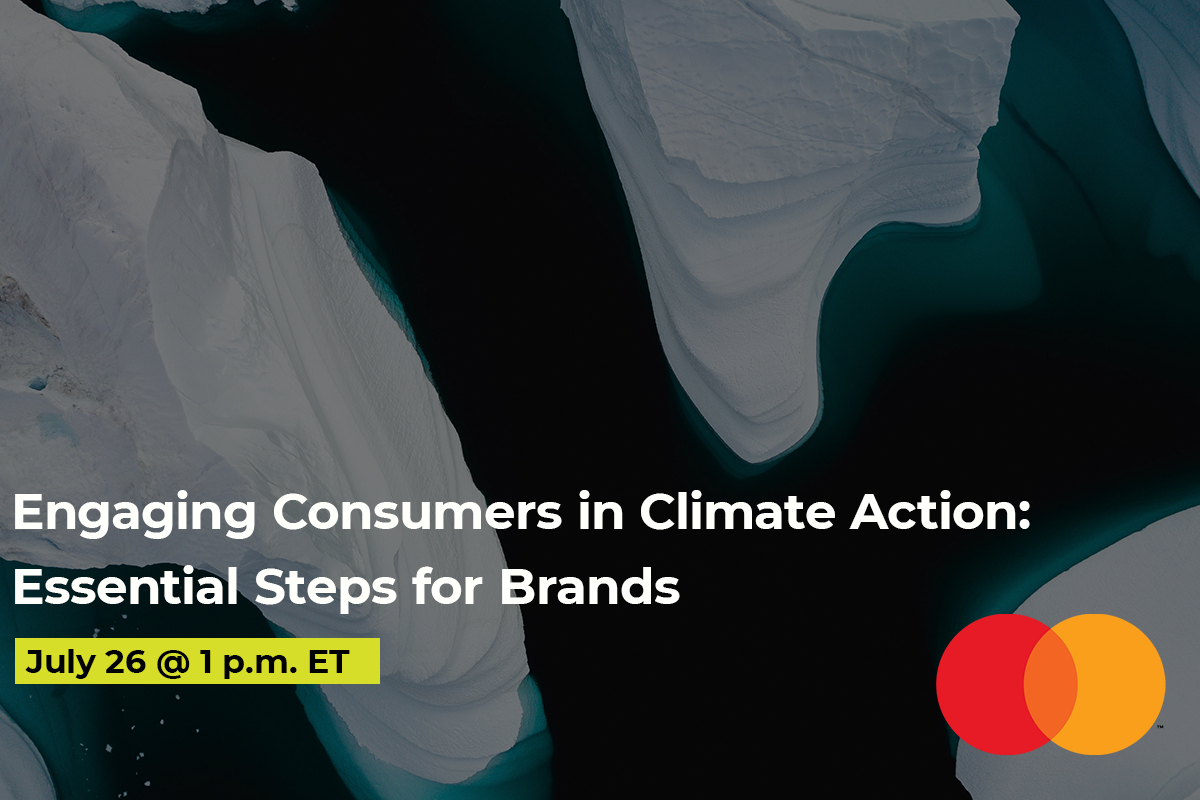
With about 3 billion cardholders across the globe, Mastercard holds a unique position in how it can engage consumers and businesses to take bolder action on climate change — and it has done exactly that. To start, Mastercard continues to build on its pledge to go net-zero by 2050, doing so with approval from the Science Based Targets initiative (SBTi).
Mastercard’s net-zero goals are in addition to its existing GHG commitments that align with the Business Ambition for 1.5°C pledge. The brand is the first within the global payments industry to gain Science Based Targets initiative (SBTi) approval for its GHG goals. Mastercard is also working towards its SBTi-approved goal to reduce its total Scope 1 and 2 emissions by 38 percent and Scope 3 emissions by 20 percent by 2025 from a 2016 baseline.
To be clear: there’s far more to Mastercard’s work on climate action than these long-term goals.
The company is taking its commitment yet another step forward, reaching out to consumers through new products and programs that help encourage and enable sustainable behaviors, in the end offering citizens the tools that will make a difference in their daily lives. What are they exactly?
Find out on Monday!
Image credit: Tima Miroshnichenko/Pexels
Critical Race Theory Gives Business Leaders Yet Another Reason to Quit ALEC


Photo: Critical race theory is a body of legal scholarship that is mostly taught and researched at law schools, such as the one at the University of Michigan (shown above). But as it has become a hot-button social issue, TriplePundit's Tina Casey explores what's behind the distortion of what critical race theory actually is.
Many leading corporations have already severed ties with the powerful lobbying organization ALEC, the American Legislative Exchange Council. Previous defections were due to ALEC’s regressive influence on public policy relating to climate change, hate speech, gun safety and other issues of foundational civic concern. Now that ALEC has turned its attention to attacking critical race theory, some of the remaining holdovers may be forced to join the stampede for the doors.
From scholarly pursuit to screaming riots: this is not your father’s critical race theory
Critical race theory is a law school term. It was coined in the 20th century to describe the analysis of legal systems through their impact on race-based outcomes. By steering the attention towards systems of cause and effect, critical race theory encourages students to remove their emotions from a deeply emotional issue and keep the focus on logical conclusions from fact-based evidence — as one should do, in school.
That is certainly not the “critical race theory” that burst into the public square last year as a terroristic threat to America’s children, touching off a series of near-riots, and actual riots, at school board meetings that continue to ripple across the country. In fact, it is the polar opposite, and that is no accident.
The scholar and author of the widely read book How to Be an Antiracist, Ibram X. Kendi, is among those who have exposed the deliberate strategy behind the sudden appearance of a warped, topsy-turvy abuse of legal scholarship. Writing for The Atlantic last month, Kendi laid the blame squarely on Fox News, and he has compiled fact-based evidence to support that claim.
“After it was cited 132 times on Fox News shows in 2020, critical race theory became a conservative obsession this year,” Kendi wrote. “Its mentions on Fox News practically doubled month after month: It was referred to 51 times in February, 139 times in March, 314 times in April, 589 times in May, and 737 times in just the first three weeks of June.”
Kendi also noted that Education Week has counted 26 states that have acted to keep critical race theory out of schools and restrict the ways in which race can be addressed in schools, with nine implementing outright bans.
“The Republican operatives…have conjured an imagined monster to scare the American people and project themselves as the nation’s defenders from that fictional monster,” Kendi observed.
Who turned critical race theory upside-down?
Fox News is only part of the media machine that has worked aggressively to characterize critical race theory as an emotion-laden trope pitting Black citizens and their allies against the white defenders of a supposedly “real” America.
Last month, reporters Tyler Kingkade, Brandy Zadrozny and Ben Collins of NBC News described the role of conservative organizations in stirring up public opinion against school boards and teachers on account of their alleged plans for teaching critical race theory to school children.
The reporters also described a coordinated, national-level disinformation strategy that supports local activists. In particular, they cite the example of senior Manhattan Institute fellow Christopher Rufo. According to their reporting, last fall Rufo was instrumental in the decision to specifically mention critical race theory in a list of diversity training topics banned from federal agencies and contractors by executive order.
That was just the beginning. The reporters also draw attention to a more recent missive Rufo posted on Twitter on March 21 of this year, in which he “promised…to make critical race theory ‘toxic’ in the public imagination.”
“The goal is to have the public read something crazy in the newspaper and immediately think ‘critical race theory,’” Rufo tweeted. “We have decodified the term and will recodify it to annex the entire range of cultural constructions that are unpopular with Americans.”
ALEC and the big money behind the “recodification” of critical race theory
Last week, the independent journalist Judd Legum fleshed out the picture of an organized strategy around the denigration of critical race theory.
Legum published a list of more than 20 high-profile conservative organizations, including ALEC, that have been aggressively promoting the critical race theory canard. Each of these organizations has the power to influence public policy through their media and outreach operations, and each has received significant funding from an obscure, media-shy non-profit organization called the Thomas W. Smith Foundation.
“There is a constellation of non-profit groups and media outlets that are systematically injecting CRT [critical race theory] into our politics,” Legum wrote in his newsletter Popular Information last week, adding that “many of the entities behind the CRT panic share a common funding source: The Thomas W. Smith Foundation.”
Legum’s list of Thomas W. Smith recipients includes well known and longstanding conservative foundations like ALEC, The Federalist Society, The American Enterprise Institute and The Heritage Foundation, as well as Turning Point, Prager University, The Daily Caller Foundation and other more recently established vehicles for far-right influence.
Corporate citizens on the hot seat
That certainly puts ALEC’s remaining corporate members in an awkward position.
Many leading corporate citizens ramped up their support for Black institutions, stepped up their internal diversity training and hiring programs, and participated in get-out-the-vote initiatives last year, as the Black Lives Matter movement surged in the wake of the George Floyd murder.
However, some of the same corporations that professed to support Black Lives Matter have also provided support for members of Congress who supported the failed January 6 insurrection. Corporate financial support for state lawmakers who promote state-based voter suppression laws has also become a brand reputation issue.
ALEC’s promotion of the critical race theory canard raises new reputational issues for corporate members that claim to support progress for both civil rights and human rights.
UPS is one such example. The company has taken a series of steps to repair the damage after reports of racial harassment among employees at a UPS facility in Ohio surfaced, and a driver was caught on video harassing a Latino resident. Both episodes predated the murder of George Floyd.
In a coincidence of timing, less than a week after the Floyd murder, Carol B. Tomé was named CEO of the company, making her the first woman to run UPS in its century-long history. Tomé has quickly gained a reputation for prioritizing diversity and inclusion. However, ALEC’s warped promotion of critical race theory threatens to undermine the goals she has set for UPS.
Shortly before Tomé took her position last year, more than 70 civic, labor and religious groups wrote to UPS and approximately 30 other companies, asking them to drop ties with ALEC on account of the organization’s campaign against COVID-19 public health orders. Included in the list were Koch Industries, FedEx, UPS, Anheuser-Busch, State Farm, GlaxoSmithKline, Novartis and Pfizer.
The International Brotherhood of Teamsters has also been pressuring UPS to pull out of ALEC since at least 2015. Last year the Teamsters sanctioned a series of organized actions in support of the Black Lives Matter movement, raising the pressure on unionized companies like UPS to combat racism in all forms, as a matter of personal behavior, corporate policy, and public policy, too.
In addition, in 2017 the organization CREDO targeted UPS over its ties to ALEC, citing the organization’s record on climate change and right-wing extremism.
This year, ALEC has come under fire for supporting the wave of voter suppression legislation that has swept across almost every statehouse in the U.S. On June 14, more than 300 groups wrote to dozens of companies that reportedly remain tied to ALEC, asking them to denounce the voter suppression movement.
UPS was included in the list of companies receiving the letter along with Alibaba, American Electric Power, Anheuser-Busch, Blue Cross Blue Shield Association, Dominion Energy, Duke Energy, EDP Renewables, Eli Lilly, FedEx, First Solar, GlaxoSmithKline, Marathon Petroleum, Novartis, Oracle, State Farm, and the U.S. Chamber of Commerce.
Pfizer was also on the mailing list, but it has already responded to the public exposure by affirming that it did not renew its membership in ALEC after 2020. Other companies on the list may have also followed suit, but apparently UPS is not among them.
The organization Common Cause is currently circulating a petition through the online portal Move On, calling out UPS and several other leading corporations for publicly condemning voter suppression, while continuing to support ALEC as members.
Common Cause claims that it has helped to motivate more than 100 companies to cut ties with ALEC over its “extreme agenda.” The petition could be just the beginning of a new pressure campaign.
If UPS is already among those ditching ALEC, then now would be the right time to announce it, loudly and publicly, as a significant gesture of solidarity in the face of insurrection, voter suppression and the critical race theory canard.
Image credit: Mathew Schwartz/Unsplash
Telling Employees to ‘Just Expense It’ Shouldn’t Cut It Anymore


Who knows when business travel will ever resume at pre-pandemic levels, especially considering the spread of the delta variant.
Right now, there are bigger corporate fish to fry than scheduling that next in-person all-team meeting. For example, companies now want us to believe they are focused on retooling how they attract, hire and retain talent a year after calls for racial equality erupted across the U.S.
A commitment to more diverse hiring practices certainly appears to be progress. The hard part, however, is actually executing on those promises.
Plus, companies should also look inwardly and gauge whether their current policies are getting in the way of having a workforce that looks like today’s America.
One current way of doing business in particular is making its own contribution to structural discrimination in the office, argues one Fortune writer.
Editor's note: Be sure to subscribe to our Brands Taking Stands newsletter, which comes out every Wednesday.
We’ve all heard that term “just expense it.” It sounds harmless enough: If you need something to do your job better, then it’s only in the employee’s and employer’s best interest to buy that subscription or product. So, what could possibly go wrong?
If you ask Stacy-Marie Ishmael of Fortune, quite a bit. Maybe the problem is not that occasional ream of paper. But if an employee is expected to take a work trip and put those costs on his or her personal credit card (or a corporate card for which that same employee is still personally liable), that is a huge sum for an employee to cough up and then wait a month or so for reimbursement.
“While we might not think of expense policies as tools of structural discrimination, the reality is that these are often written (and enforced!) by people whose relationship with credit is based on maximizing their points and getting that good lounge access,” Ishmael wrote in Fortune’s Race Ahead newsletter. “Just as unpaid internships reward people who can afford to work for free, requiring employees to carry balances and wait for reimbursement places an undue burden on people who can’t afford to extend a personal loan to their employer.”
What’s the message for employers, and more specifically, the human resources and accounting folks that often write and execute these policies?
Ishmael points to a 2019 bulletin from the Federal Reserve that looks at family wealth across U.S. society. At that time, the average white family had assets totaling almost $190,000 on average, compared to just over $24,000 for Black families. For younger Americans, the gap is even more stark: Young white families held assets that averaged over $25,000, while young Hispanic families’ assets totaled a tad over $11,000. The average amount of assets owned by young Black families: $600.
The Federal Reserve study also found that young Black professionals on average carried 20 percent more student loan debt than their white counterparts.
So, why does this matter come expense report time? While Lending Tree data found that less than 20 percent of white applicants had their applications for credit cards rejected, 44 percent of Black Americans’ applications were turned down.
The barriers continue as workers get older and seek home ownership: A 2018 Washington Post report found a similar racial and ethnic discrepancy on home mortgage and refinancing loan applications. If one can’t secure a decent credit record, then forget about buying that home in the future.
Not that having access to one’s own credit card solves the problem. The same company that has a 30-day reimbursement policy often won’t pay any interest charged to an employees’ credit card if they were not able to pay that work trip expense off in time.
One Forbes writer concluded last year that due to expense policies, during 2018 employees had provided the companies for which they worked $1.6 billion a month in interest-free loans. That’s a weight not equally shared by all employees. Promises of air miles or grocery points are hard to swallow if that burden is falling especially hard on a company’s younger employees or staff who happen to be people of color.
The bottom line is that when it comes to matters of race and equity, companies should look inwardly before embarking on a public campaign to make their companies more diverse and inclusive.
Image credit: Andy Beales/Unsplash
B Corps Stepped Up Big Time During the Pandemic


Many companies across the globe are using business as a vehicle for good. In particular, Certified B Corps meet rigorous criteria for social and environmental standards. Each year, B Lab honors the top-performing B Corps across the globe that use business to have a positive impact, and it recently released the 2021 Best for the World list.
This year, B Lab explored how companies responded to the global COVID-19 crisis to have a positive impact on their communities, customers, governance, workers and the environment. It recognized 767 B Corps across 50 countries, with companies ranging vastly in size and industry. Let’s explore a few of the best of the best and how they stepped up in a time of crisis.
A dozen roses for one of the leading B Corps
Hoja Verde: Located on the equator, Ecuador has many hours of sunlight, and the Andean highlands have warm days and cool nights, ideal for rose production. Hoja Verde, which means “green leaf,” cultivates over 120 varieties of roses (as in the ones pictured above) for export. The company sells its flowers to Europe and North America, and it is the leading supplier for Whole Foods.
Although the rose is a popular symbol of love, commercial rose cultivation can often lead to unsafe working conditions and environmental contamination from agricultural chemicals. By contrast, Hoja Verde is dedicated to using biological pest control systems and organic fertilizers. It even provides housing, educational support, pediatric services and low-interest loans to its workers.
In Ecuador, food shortages have caused price increases. Since the lockdown, many Ecuadorians have struggled with food security and meeting their basic nutritional needs, especially in remote villages. Hoja Verde has applied its skills and knowledge to better the local community to address these issues. Its experts lead community gardens and have training programs in self-sufficiency, skills that could have been priceless anywhere during the COVID-19 pandemic.
Hoja Verde has been recognized as a "Best for Community" honoree in 2019 and 2021. In addition, its roses are fair trade-certified.
This Minnesota-based CDFI stands tall
Sunrise Bank: Headquartered in Saint Paul, MN, Sunrise bank calls itself “the world’s most socially responsible bank.” It is certified by the U.S. Treasury as a Community Development Financial Institution (CDFI), a designation held by only about 100 banks in the U.S. This means that Sunrise works to create economic growth opportunities in some of the most distressed communities across the country.
The banking industry is often associated with social ills, such as promoting racial inequality and promoting the concentration of wealth – while the industry’s practices have been among the reasons why many people of color have not been able to benefit from accumulating intergenerational wealth. Further, the crushing economic impact of the COVID-19 crisis has had the harshest impact on communities of color.
Financial institutions can help promote equality and economic vitality by helping to eradicate racial disparities. As lenders, they can make capital available to customers, promoting equality. As influencers, they can help hold companies accountable with fair business practices. Finally, as employers, they can help promote inclusion and diversity.
Sunrise is dedicated to transparent corporate governance and is a mission-driven organization. One example is TrueConnect, a free workplace lending program that seeks to avoid the cycle of debt through payday loans from lenders that often use predatory or unfair practices. The TrueConnect program connects employees with affordable loans that are repaid through payroll deductions.
Sunrise was recognized among B Corps as a "Best for Customers and a Best for Governance" honoree in 2021 and has been a “Best for the World” honoree since 2013.
Raise your glasses for how this company looked out for its workers and communities
New Belgium Brewing Company: What had started in a small basement in Fort Collins, CO, has grown to become the fourth-largest craft brewing company in the U.S. Before selling to Little Lion World Beverages in 2019, New Belgium was 100 percent employee-owned, which significantly shaped how the company was managed. It has been among the ranks of certified B Corps since 2013.
Its flagship products include Fat Tire Amber Ale and Voodoo Ranger IPA, and they were the first brewery to join 1% for the Planet. To date, the brewer has donated more than $29 million through grants and giving programs.
The New Belgium Coworker Assistance Fund is a non-profit organization that assists its workers in times of need after a catastrophic disaster or personal hardship. The fund was created after the High Park Fire in 2012, when 14 employees were evacuated for extended periods and two of them lost their homes. Funding is confidential and is a gift; thus, it doesn’t need to be repaid. Such initiatives help create employee resiliency in times of need and can promote employee morale and retention.
The New Belgium Bar and Restaurant Relief Fund was created to help the food and beverage communities of Ashville, NC and Fort Collins, CO, recuperate from the fallout resulting from the COVID-19 pandemic. The brewing company provided seed money, matched donations, and ultimately helped 880 bar and restaurant workers. Working as a force for good in the community, it helped bring people together during a very trying time.
One of the leading B Corps within the beverage sector, New Belgium was recognized as a Best for Workers and a Best for Environment honoree in 2021 and has been a Best for the World honoree since 2013.
Image credit: Hoja Verde